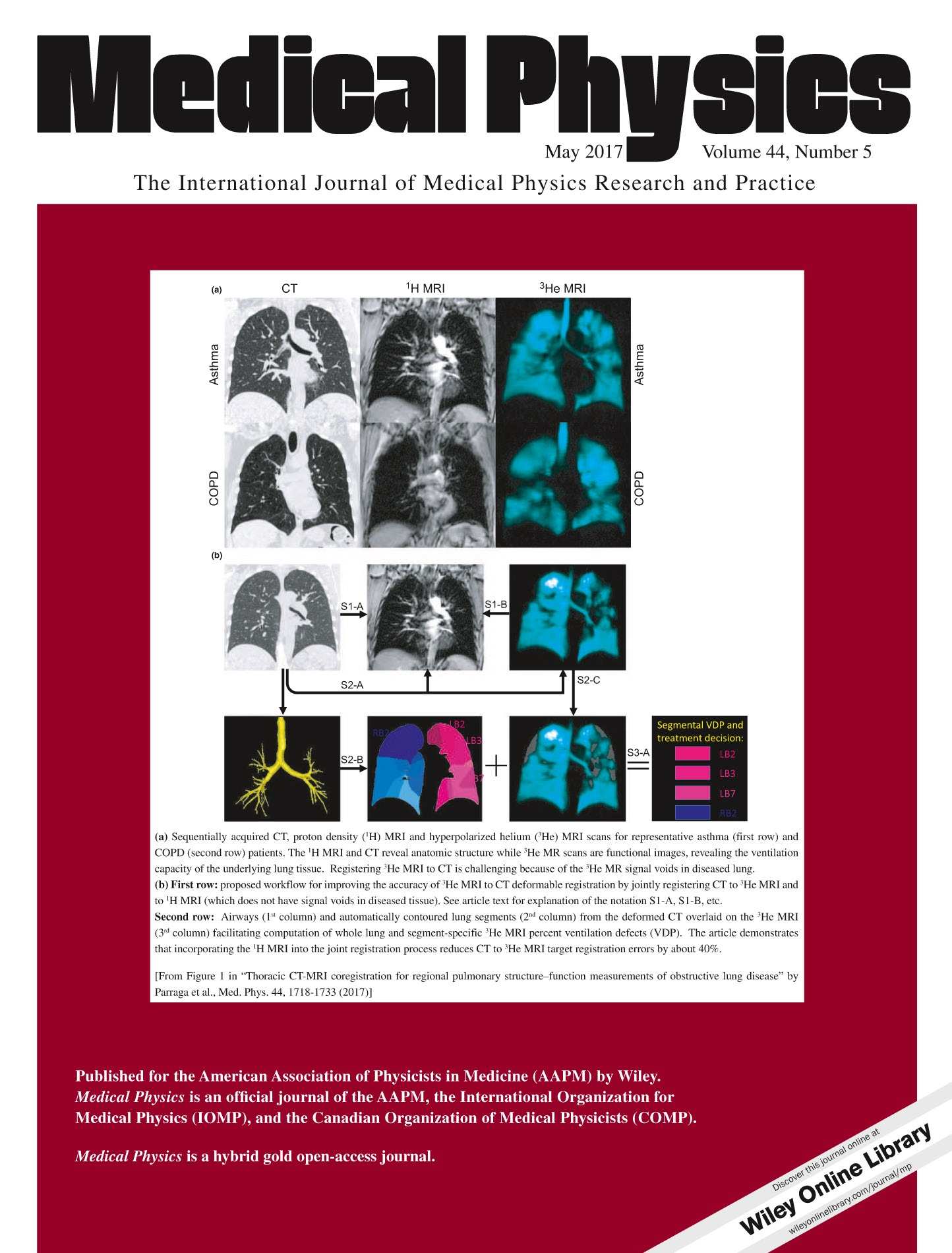The impact of small motion on the visualization of coronary vessels and lesions in cardiac CT: a simulation study
Contijoch F, Stayman JW, McVeigh ER

Purpose: Coronary x-ray computed tomography angiography (CCTA) is used to non-invasively assess coronary artery geometry and has, combined with computational modeling, demonstrated the potential to identify physiologically significant lesions. These measurements require robust and accurate coronary imaging and delineation of vessels despite the presence of small motion. This simulation study characterizes the impact of small, uncorrected vessel drifts during data acquisition on the assessment of vessel intensity, diameter, and shape.
Methods: We developed a digital phantom and simulated projection data for a clinical scanner geometry for a range of vessel drifts that can occur during relative vessel stasis (0 to 2 mm per 360° gantry rotation) for vessels between 0.2 and 3.0 mm in diameter (covering 0% through 93% stenosis of a 3 mm vessel). In addition to the impact of vessel drift, we evaluated the performance of half-scan acquisitions (relative to full-scans) over a range of gantry positions. The performance of FDK reconstructions was compared to an iterative technique and potential improvement in sampling from focal spot deflection and quarter detector offset was compared.
Results: At rest, vessel intensity and diameter were accurately obtained in vessels greater than 1.5 mm with all vessels appearing circular in shape (major-to-minor axis ratio ~1). Vessels between 1.5 and 0.2 mm in diameter demonstrated a rapid decrease in signal intensity with full width half maximum (FWHM) vessel diameters remaining above 0.75 mm as true vessel diameter decreased. Uncorrected vessel motion resulted in decreased vessel intensity, increased vessel diameter, and distortion of vessel shape. The extent of these changes depended on both the position of the gantry as well as the reconstruction approach (half- vs. full-scan). FDK reconstruction results depended on choice of filter with Ram-Lak results yielding comparable performance to an unconstrained iterative reconstruction. Focal spot deflection and quarter detector offset did not result in large changes in performance, likely due to the high sampling density near the isocenter.
Conclusions: Despite improvement in gantry speed and acquisition of coronary images during cardiac phases that have relatively stationary vessels, small coronary drifts (0–2 mm per 360° rotation) have been reported and if uncorrected, can present challenges to visual grading and computational modeling of stenoses because vessels will appear dimmer, larger, and more ellipsoidal in shape. The impact of a particular motion depends on the gantry position, the use of half vs. full-scan acquisitions, and the reconstruction technique.
